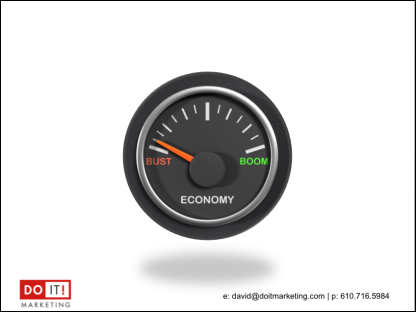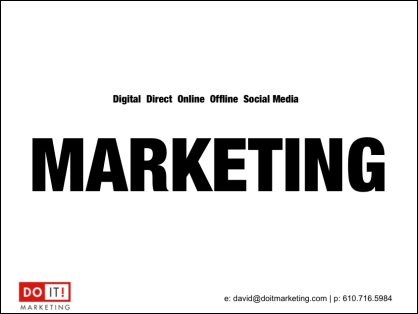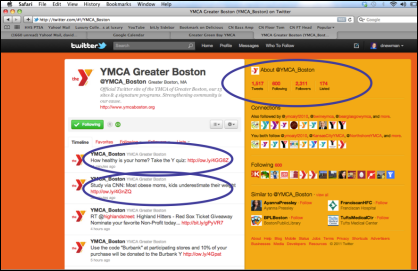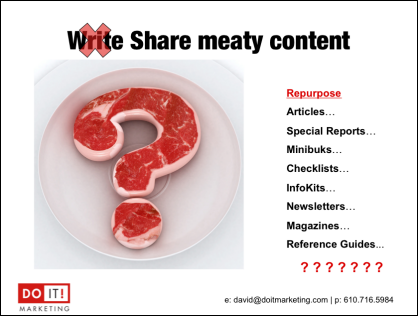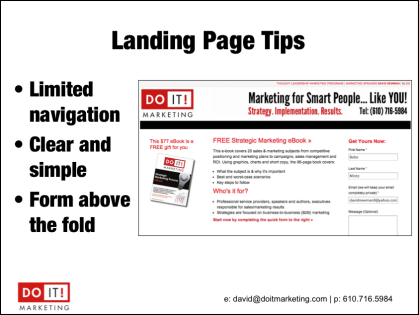 There are only three problems that you, as a small business owner, entrepreneur or professional service provider, are ever going to be in a position to solve.
There are only three problems that you, as a small business owner, entrepreneur or professional service provider, are ever going to be in a position to solve.
You may sell the world’s greatest widgets… You may have patented the most efficient doo-dad your industry has ever seen… Your flagship service may be the most effective on the planet with the only 100% bulletproof guarantee in the business…
Hard truth:
- None of your prospects has a widget problem
- None of your prospects has a doo-dad deficiency
- None of your prospects stay up at night searching for a bulletproof guaranteed service
Let’s reframe your sales conversations as a delicate balancing act of investigating your prospect’s most important priorities and connecting your product or service to solving those specific problems or advancing those specific goals.
For the executives and decision-makers you’re selling to, at any given moment in time, their priorities might fall into one of three categories: Solving people problems, process problems, or profit problems. Which of these 63 sales triggers do you use the most? (Please use the COMMENTS area below to chime in...)
People Problems
People problems come in all shapes and sizes, but here’s a starter list so you can probe them more intelligently during your next sales conversation with a prospect:
-
Recruiting top talent
-
Retention of top talent
-
Employee engagement
-
Recognition and reward
-
Staff utilization
-
Leadership
-
Teamwork
-
Communication
-
Coaching
-
Collaboration
-
Succession
-
Silos and turf wars
-
Gossip, gab and the grapevine
-
Delegation
-
Micromanagement
-
Perfectionism
-
Negativity
-
Entitlement
-
Arrogance
-
Complacency
Process Problems
Process problems show up as inefficiencies, gaps, missed opportunities, too much wasted time or effort, too many steps, too much waste, too much bureaucracy or paperwork or too many layers between customer and company.
There were entire industries built around business process innovation and a handful of fads from the 1950’s to the 1990’s didn’t help – the total quality movement, business process re-engineering, outsourcing, insourcing, rightsizing, you name it.
Let’s cut to the chase and catalog a brief list of potential sources of process problems that you may want to discuss with your prospect in order to get their attention focused on the desired impact of your products or services.
-
Accounting
-
Billing
-
Call Centers
-
Contracting
-
Customer Service
-
Delivery
-
Distribution
-
Engineering
-
Facility management
-
Finance
-
Information Systems
-
Innovation
-
Inventory management
-
Manufacturing
-
Marketing
-
Operations
-
Payroll
-
Product development
-
Regulatory compliance
-
Research and development
-
Sales
-
Strategic planning
-
Workforce diversity
Profit Problems
Profit problems come in many shapes and sizes.
What’s important is that when you are marketing and selling your products and services that you do NOT overlook this vitally important problem that is NEVER far from the mind of any serious prospect.
Often placed at the end of a chain reaction of internal and external variables (where your products and services come into play), when you talk about solving your customers’ profitability problems, the outcomes almost always end up with YOU using the following “so that” phrases:
-
So that you sell more…
-
So that you sell more often…
-
So that you sell at full price…
-
So that you avoid discounting…
-
So that you open new markets…
-
So that you expand your product line…
-
So that you cut costs…
-
So that you manufacture and distribute more efficiently…
-
So that you speed up time to market…
-
So that you cross-sell…
-
So that you up-sell…
-
So that you open new channels…
-
So that you raise prices…
-
So that you boost your margins…
-
So that your per unit cost goes down…
-
So that you franchise…
-
So that you license…
-
So that your stock price goes up…
-
So that your revenues increase...
-
So that you conserve more cash…
Use these 63 checkpoints and you’ll be better equipped to isolate your prospect’s real issues - and you’ll more quickly identify the “problem behind the problem” and position your products and services in the context of solving the root cause of your prospect’s current challenges.
Do THAT and your sales conversations will become more successful in the short term and much more profitable in the long term.
___________
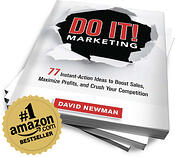 Want hundreds more marketing, sales, and business development ideas, templates, and tools? Buy the Do It! Marketing book and get over $747 in business-building bonuses. You'll also get a kickass marketing book that might be exactly what you've been looking for to take your business from average to awesome. Buy the book now then grab your bonuses from this link.
Want hundreds more marketing, sales, and business development ideas, templates, and tools? Buy the Do It! Marketing book and get over $747 in business-building bonuses. You'll also get a kickass marketing book that might be exactly what you've been looking for to take your business from average to awesome. Buy the book now then grab your bonuses from this link.
You can thank me later. Rock on!


 Disclosure: I never badmouth anyone in public. EVER. Even if they deeply and richly deserve it. And I’m not about to start now, even though this story may send chills down your spine. All names have been removed to protect the goofy.
Disclosure: I never badmouth anyone in public. EVER. Even if they deeply and richly deserve it. And I’m not about to start now, even though this story may send chills down your spine. All names have been removed to protect the goofy.
 Many of my marketing mentor clients want to boost their online presence - in the words of my pal Henry DeVries, they want “more blogs, more buzz, and more business.”
Many of my marketing mentor clients want to boost their online presence - in the words of my pal Henry DeVries, they want “more blogs, more buzz, and more business.”
 I’ve quit.
I’ve quit.



 How can we offer a risk-free trial of our product/service?
How can we offer a risk-free trial of our product/service?